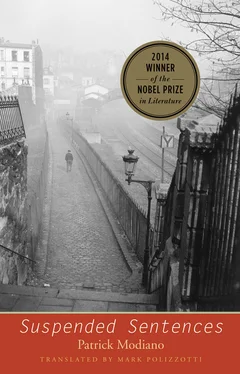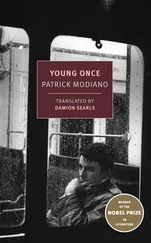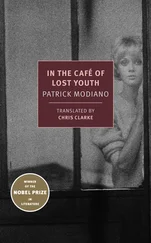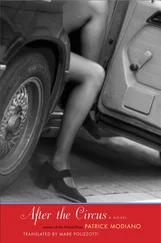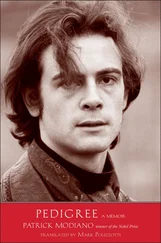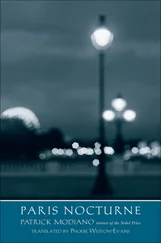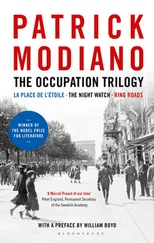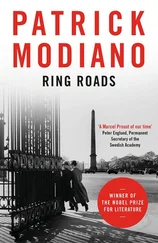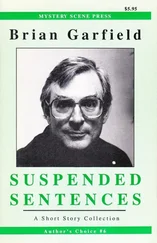At the time, I didn’t really care about the whys and wherefores of “the tragic orgy,” or about the role of the red velvet elevator that Claude Bernard had shown us at the back of the living room. To us, the Ile des Loups and its environs were just one more suburb. On the route we took from the station to the Quai de l’Artois, where Claude Bernard was waiting for us in his boat, I was thinking that we’d soon be going away, thanks to the money from the Balzacs and the old music box I’d sold him. Before long, Jacqueline and I would be far away from the Marne and Le Perreux — in Vienna, where I’d turn twenty.
I’d like to linger on the Left Bank a while longer, being a child of Saint-Germain-des-Prés. I attended the public school on Rue du Pont-de-Lodi and studied catechism with Father Pachaud on Rue de l’Abbaye and Place Furstenberg. Since then, however, I’ve avoided my former village, which I no longer recognize. This evening, the Carrefour de l’Odéon seems as desolate to me as the Breton port of Montparnasse in the drizzle.
One of my last memories of Saint-Germain-des-Prés goes back to Monday, January 18, 1960. I was fourteen and a half and I had run away from school. I had walked all the way to La Croix de Berny, skirting the hangars of the Villacoublay airfield. Then I’d taken a bus to the Porte d’Orléans, and then the metro. I had gotten off at Saint-Germain-des-Prés. I ended up in a café, Chez Malafosse, at the end of Rue Bonaparte where it meets the quay. At least, Chez Malafosse is what my father used to call it. After lunch, we’d be in his office with his friends and he’d say to me:
“Go get us some Partagas at Malafosse.”
That afternoon, at Chez Malafosse, a group of people my mother knew, who were always hanging about in that neighborhood, were standing at the bar. Among them was a pretty Danish girl with short blond hair and periwinkle eyes. She used slang words that clashed with her soft, childlike accent. Slang that was often outmoded. When she saw me come in, she said:
“What the fuck are you doing here, old top?”
I confessed that I was playing hooky. There was an embarrassed silence. I was on the verge of bursting into tears. Suddenly, she said, with her Danish accent:
“What the fuck does that matter, old top?”
Then she slammed the palm of her hand down on the counter:
“A whiskey for Old Top here …”
I recall the billiards players upstairs at the Café de Cluny. I happened to be there, one Saturday afternoon in January, the day of Churchill’s funeral. It was in 1966 that they renovated all the cafés on Place Saint-Michel and the boulevard; in recent years, some became McDonald’s, like the Mahieu, where the off-track bettors used to gather, and where one could hear the crackling of the machine as it spewed out the racing results.
Until the late sixties, the neighborhood had remained unchanged. The events of May ’68, which it hosted, left only black-and-white news images, which at a quarter-century’s remove seem as distant as the ones filmed during the Liberation of Paris.
Boulevard Saint-Michel is engulfed in a December-like fog this Sunday evening, and the image of a street resurfaces in my memory, one of the few streets in the Latin Quarter — the only one, I think — that often figures in my dreams. I finally identified it. It slopes gently down to the boulevard, and the contagion of dreams into reality ensures that Rue Cujas will always remain frozen for me in the light of the early sixties, a soft, limpid light that I associate with two films from that time: Lola and Adieu Philippine .
Toward the bottom of the street, on the ground floor of a hotel, there used to be a movie theater, the Studio Cujas. One July afternoon I entered the cool and darkness of that theater, out of idleness, and I was the only spectator.
A bit farther up, on the Montagne-Sainte-Geneviève, I used to meet a girl I knew who acted in New Wave films — as we called them then.
I thought about her yesterday afternoon, when I crossed paths by the gates of the Jardins du Luxembourg with a man wearing a ratty Shetland pullover, whose brown hair and hawk nose seemed familiar. Yes, of course, I often used to see him in the café where that girl and I would meet. A certain François, nicknamed “the Philosopher,” probably because he gave private lessons in philosophy.
He didn’t recognize me. He was holding a book and he looked like an overripe student. I had returned to that neighborhood by chance, after a quarter of a century, and now here was that unchanged man, forever faithful to the sixties. I could have said something to him, but the amount of time since our last meeting made him inaccessible, like someone I’d left on the beach of a faraway island. I had set sail.
I saw him again today, on the other side of the gardens, in the company of a young blonde. He lingered for a moment, talking to her at the entrance to the RER station that replaced the old Luxembourg stop. Then she went down the steps and left him on his own.
He walked with quick steps on the sidewalk of Boulevard Saint-Michel toward Port-Royal. He was still holding his book. I tried to follow him, keeping an eye on his Shetland pullover with its greenish stain, until I lost sight of it around Rue de l’Abbé-de-l’Epée.
I crossed through the gardens. Was it because of meeting that ghost? Or the alleys of the Luxembourg, where I hadn’t walked in ages? In the late-afternoon light, it seemed to me that the years had become conflated and time transparent. One day, I had accompanied that girl who acted in movies, in her convertible, from the Montagne-Sainte-Geneviève to the Saint-Maurice film studios. We followed the river to the outskirts of Paris and the plane trees formed a canopy of foliage. It was in the spring of 1963 or 1964.
The snow that turns into mud on the sidewalks, the railings around the Cluny thermal baths where unlicensed street hawkers had their stalls, the bare trees, all those tones of gray and black that I still recall put me in mind of Violette Nozière. She used to meet her dates in a hotel on Rue Victor-Cousin, near the Sorbonne, and at the Palais du Café on Boulevard Saint-Michel.
Violette was a pale-skinned brunette whom the tabloids of the time compared to a venomous flower and whom they nicknamed the “poison girl.” She struck up acquaintances at the Palais du Café with ersatz students wearing jackets that were too tight at the waist and tortoiseshell glasses. She convinced them she was expecting a large inheritance and promised them the moon: exotic trips, a Bugatti … She had probably crossed paths on the boulevard with the T. couple, who had just moved into their small apartment on Rue des Fossés-Saint-Jacques.
A bit farther down the street from the Palais du Café, on the opposite side, a twenty-year-old girl, Sylviane, played billiards upstairs at the Cluny. She wasn’t a pale brunette like Violette, but auburn-haired, with the kind of coloring you might call Irish. She wouldn’t remain long in the grayness of the Latin Quarter. Soon she would be spotted in the Faubourg Montmartre, at the Fantasio, and in the billiards parlors on Boulevard des Capucines. Then she’d frequent the Cercle Haussmann on Rue de la Michodière, where she’d meet some patrons. Gifts, jewelry, the easy life, the riding club in Neuilly … At the start of the Occupation, she would marry a penniless suitor who nonetheless bore the title marquis of the empire. She would spend long sojourns in the Free Zone, on the Côte d’Azur, and the president of the Société des Bains de Mer in Monaco would count among her admirers. Her return to the Occupied Zone … Her meeting with a certain Eddy Pagnon in dubious circumstances … But, in that spring of 1933, she was still living with her mother, in Chelles, in the Seine-et-Marne region, and she commuted to Paris on a Meaux line train that dropped her off at the Gare de l’Est. According to a witness questioned by the detectives, one of the two women who brought the T. couple to Le Perreux had auburn hair and didn’t seem older than twenty. She lived in the eastern suburbs. But was her name Sylviane?
Читать дальше
